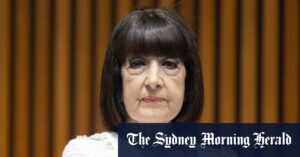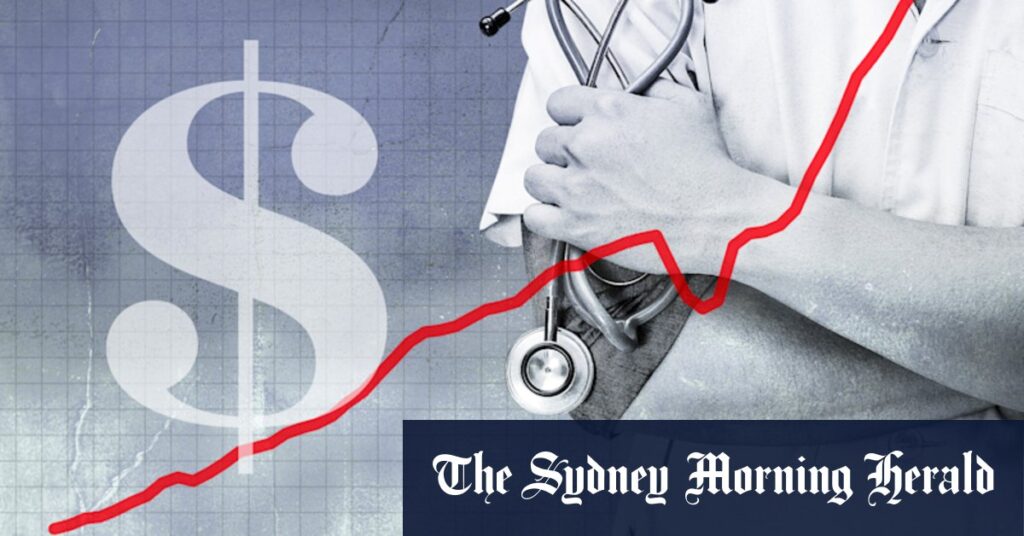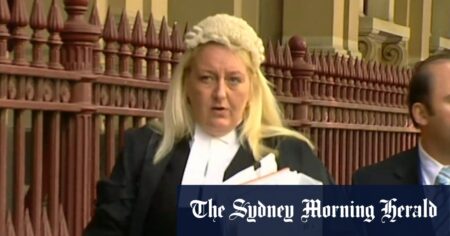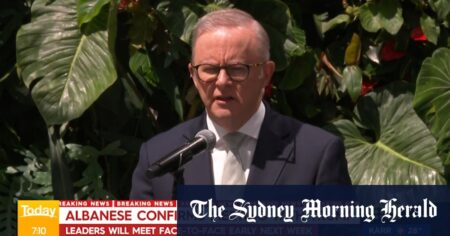Since 2010, average out-of-pocket costs for visiting a GP have risen from $7 to $11 in real terms. Over the same time, average specialist costs have soared 73 per cent, from $45 to $78 in today’s money.
About 40 per cent of Australians see a specialist each year. Most of these appointments – about two in three – are private, where patients receive a Medicare rebate and almost always pay a fee.
Those who choose to go public pay with their time. Across Sydney, Melbourne, Brisbane and Adelaide, there are 50 specialities with waiting times of more than a year. For some, the wait was longer than three years.
High fees reflect an ‘uncompetitive’ market
While some countries, including Canada and France, set some limitations on specialist fees, there is no such regulation in Australia. Specialists here are allowed to set their prices.
When patients are quoted a hefty fee for a particular service, they can find it difficult to shop around because there is no easy way to compare prices. The Grattan report said the government’s revamped Medical Costs Finder website was a “positive step”, but this is unlikely to be in place for some time – the legislation is expected to be introduced to parliament later this year.
The report also identified issues with training pipelines for doctors wanting to enter in-demand fields. The authors said medical colleges – responsible for training specialists – were “not set up to solve workforce shortages”.
They suggested more than $300 million in government spending could go towards boosting training opportunities and directing qualified doctors towards areas of greatest need.
Loading
Dr Astha Tomar, president of the Royal Australian and New Zealand College of Psychiatrists, said the efforts of medical colleges to enforce safety and quality standards were not a barrier to entry, and welcomed further government funding to get more doctors into psychiatry – which is among the highest charging specialties.
The report also proposed denying Medicare claims from specialists who charge more than triple the government-funded rebate – something that has long been proposed but would be difficult to implement.
The cost of a first appointment has increased
The next chart shows how much the median cost of each specialty has risen in the past five years.
The median cost of a first appointment with a psychiatrist is now $240, almost $100 more expensive than in 2018.
More than half of nephrology (kidney) and cardiology appointments were bulk-billed five years ago, but each now incurs an average out-of-pocket cost of $37 and $67, respectively.
One proposal to fix this is to reduce the need for one-off referrals by enabling GPs to seek written advice from a specialist within three days. The report estimated this could avert 68,000 referrals and save patients $4 million a year.
Even low-income families face high out-of-pocket costs
On average, Australians spend about $300 a year on specialists. Even in low-income households, the report found 72 per cent of people who saw a private specialist paid a bill at least once.
It means one in five Australians needing specialist care delay or avoid care. Every year, 1.9 million people miss out on treatment, and half do so because of cost.
For many, the public system is their only option. But that is not viable for those who don’t have years to wait for an appointment or live outside major capital cities.
Health services are concentrated in our cities
It makes sense that most specialists live and work in major cities – they are home to the majority of Australia’s population, our research institutions and our busiest and most well-resourced hospitals.
But even when accounting for population and need, Sydneysiders and Melburnians are still far better off than their counterparts in the regions.
The researchers created a model estimating how many appointments were available per person per year, adjusting for the demographic needs of each community (such as age, Indigenous status and prevalence of chronic health conditions).
They estimated the government would need to spend $470 million to boost access to specialist appointments in 81 communities with the lowest access to care. This would provide 1 million face-to-face and telehealth appointments to those most in need.
Read the full article here

















